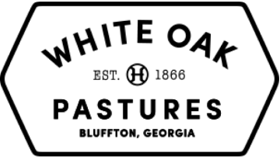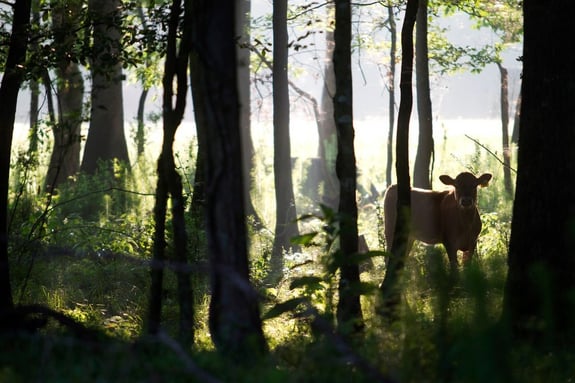
Examples of some natural states would be desert, rainforest, tallgrass prairie, shortgrass prairie, forest, tundra, and there are many more. We call these ecosystems.
All land is predisposed to be in the natural state that it evolved into. The land longs for it.
.jpg?width=7360&name=Grassfed%20cattle%20in%20forest%20(1).jpg)
White Oak Pastures is located in South Georgia, which is in the Gulf Coastal Plain ecoregion. The natural state, or ecosystem, of the coastal plains of the Gulf of Mexico is a type of jungle.
- We are subtropical here, and our land is an ancient seabed.
- Before modern agricultural cultivation, this was a wiregrass savannah on the uplands, and hardwood bottoms in the low-lying areas.
Land in the Gulf Coastal Plains longs to be jungle. Even if the plant life here is mechanically cleared, the land will again become jungle.
In my opinion, the biggest difference between original, “virgin” jungle ecosystems and the state of our soils today is the starvation and poisoning of soil microbes as a result of our land management practices.
There are five ways that we humans are using to try to control vegetation, and each impacts microbial health differently:
Till it
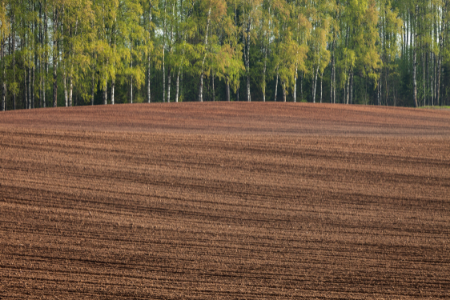
Tilling may be the most damaging tool that we use to control Nature.
- Tilling destroys the microbial habitat; the insult to land doesn't get much worse.
- When you smell the wonderful earthy scent of a newly tilled field… you are smelling your microbes dying.
- The subsequent planting of the field in a monocultural crop of one plant species further worsens a tragedy.
Spray it
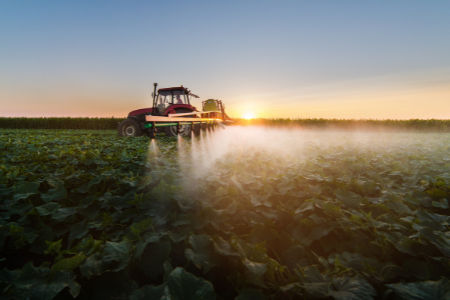
Spraying pesticides and herbicides is probably a close second in terms of damage to microbes.
- Cide is latin for 'to kill'. These chemicals poison microbes, and they also kill plants and insects with whom soil microbes are supposed to have a symbiotic relationship.
- An effectively operating ecosystem is teeming with life. It is unhealthy to utilize a broad application for narrowly-targeted killing.
Burn it
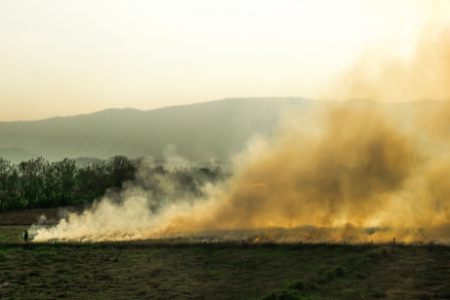
Burning is a more natural function than the first two practices. Burning, caused by lightning or other natural causes, has gone on as long as there has been weather.
- But a natural fire, in a functioning ecosystem, is only occasional and has a light impact. on the ecosystem. If done too often with too much intensity, it starves microbes.
- Fire is the rapid oxidation of the nutrients that are trapped in the plant material. These nutrients should be returned to the soil, instead of released into the atmosphere.
Mow it
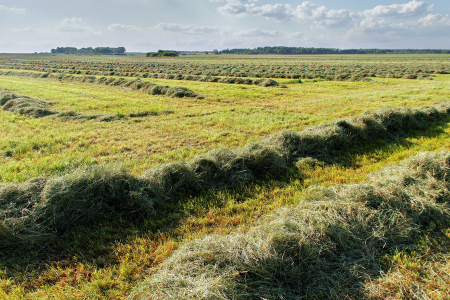
Mowing seems to be the most innocuous that the previously discussed technologies, but it is not.
- Most of the nutrients in plant material should be made available as food for microbes to ingest.
- Mechanically mowed grass is not in a state that can be readily metabolized be microbes. Mowing plants leaves the plant material unnaturally littered on top of the soil in a form that will volitize or oxidize and never reach the living soil.
- Mowing requires the use of fossil fuel, but worse, it starves soil microbes of the opportunity to feed on most of the nutrients that were stored in the plant material.
For solar operators in particular: erosion control is the most expensive post-construction cost that operators suffer. Research from Doug Peterson, soil scientist, formerly at NRCS and now part of Understanding Ag, shows that soil under rotational grazing has an infiltration rate of 27 in/hour, compared to a rate of 0.59 in/hr for land that has been mowed and tilled for a long period of time.
When land is compact, rain just runs off (taking soil with it). When land has good water percolation, it erodes a lot less.
Graze it
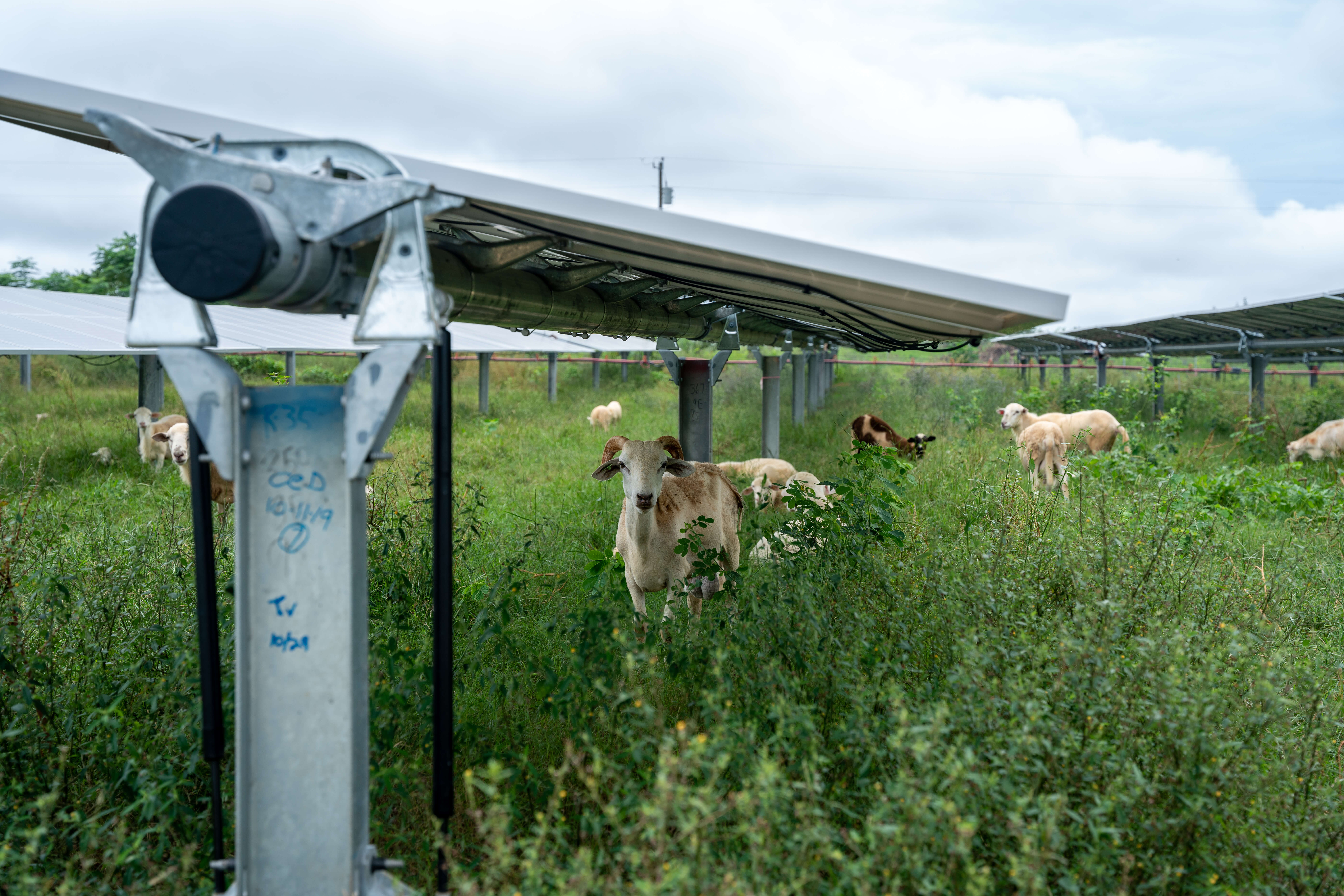
Grazing is the vegetation control method that Nature intended. Animal impact was part of how most of the ecosystems on the Earth evolved.
- Ruminants bite off mature foliage of plants, and digest them in their 40-gallon portable fermentation chamber [their stomach].
- The resulting manure helps microbes thrive. The nutrients in manure are readily available to soil microbes because they are digested. If the plant material was not pre-digested by the ruminant, most of the nutrients would oxidize and never be made available to soil microbes.
- In old ecosystems, wood bison and deer would have browsed, and also would have been slowly chased by wolves. This animal input is critical. A jungle that re-vegetates after being cleared, without animal impact in its formation, will become an ecosystem that is very different from the original ecosystem.
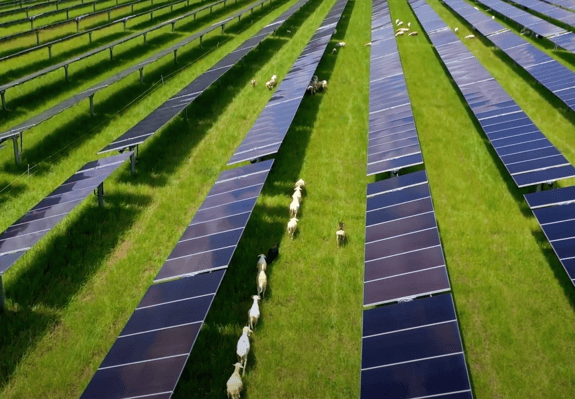
The first four of these methods starve the microbes in the soil.
The soil is a living thing. If microbes could be heard screaming, we would never practice these first four methods.
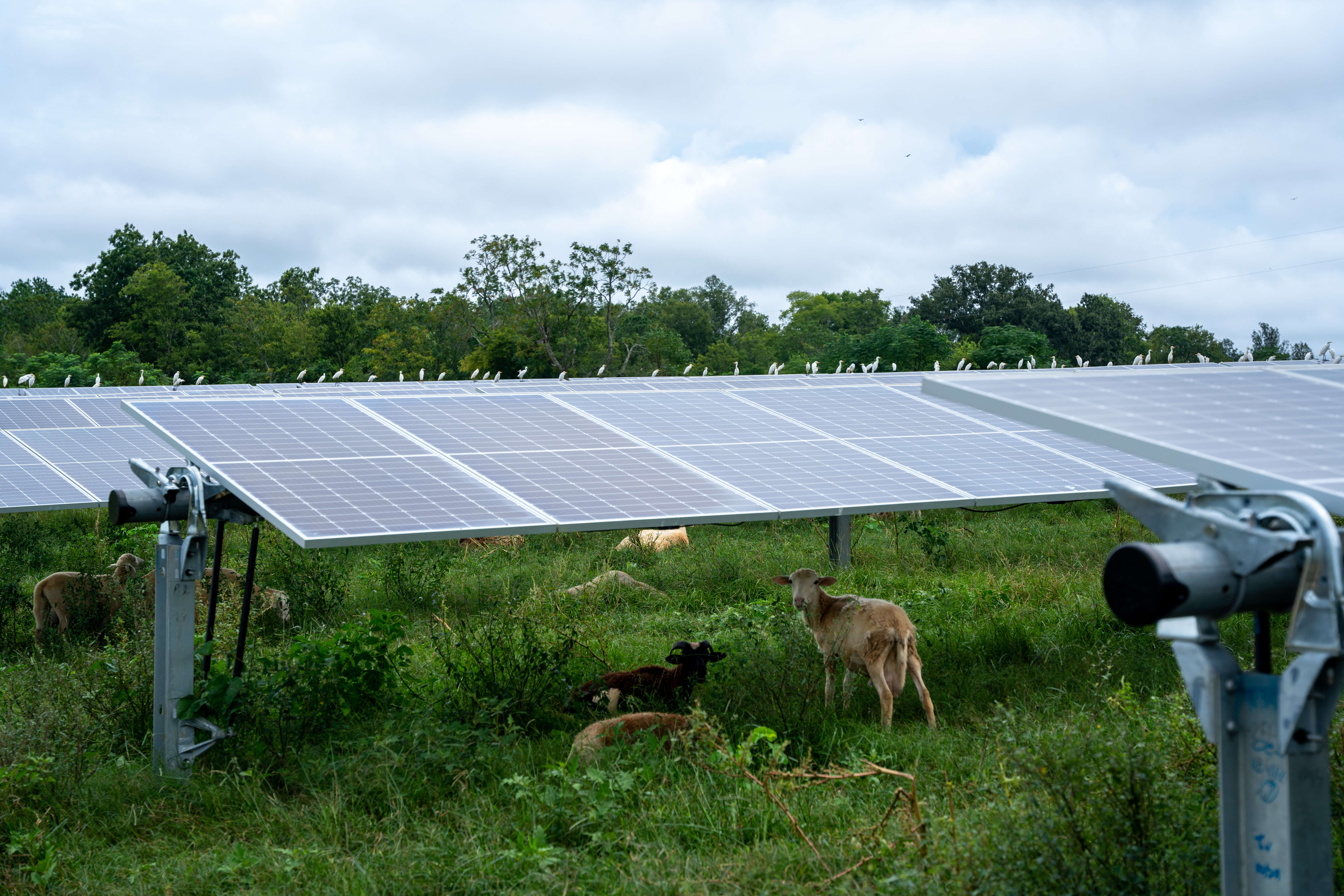
The reasons above are why we advocate for large land holders, like solar operators, to use grazing as a vegetation control tool.
White Oak Pastures has partnered with Silicon Ranch to control the vegetation around their utility-size arrays, showing one way managed grazing can be used as vegetation control.
